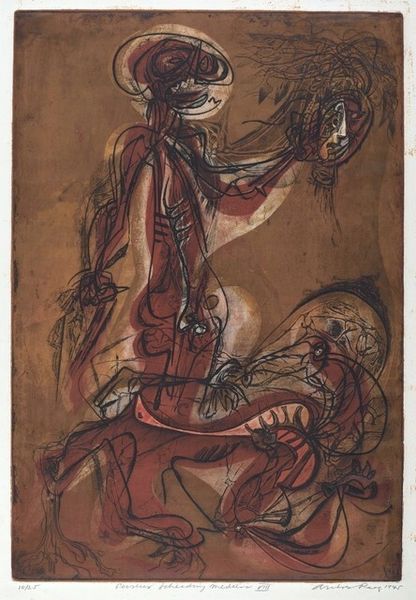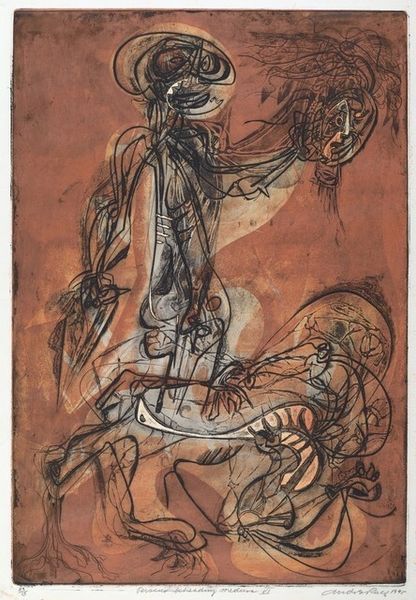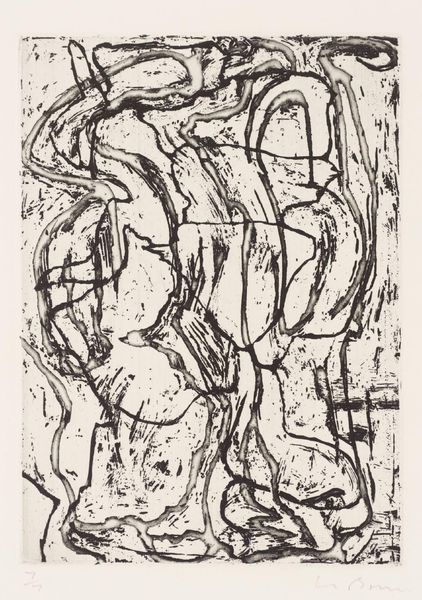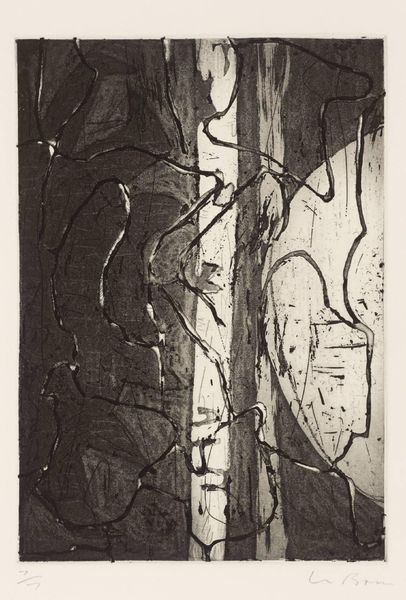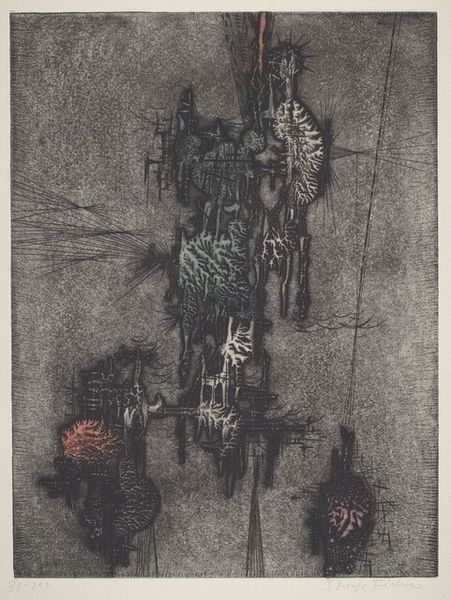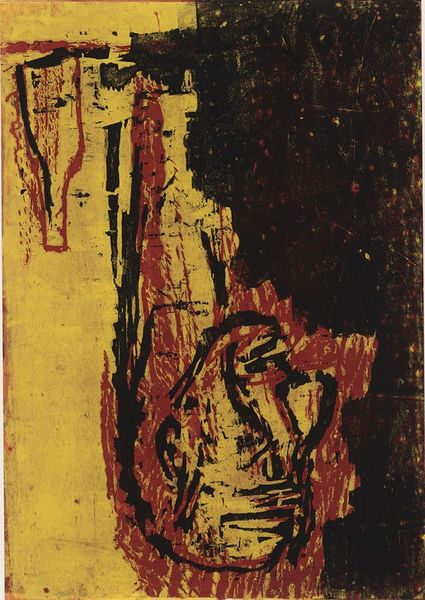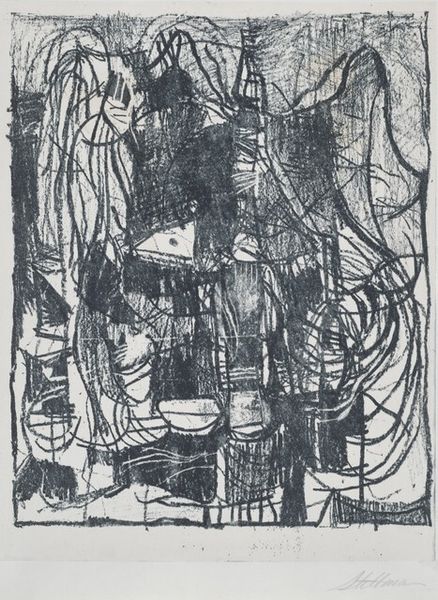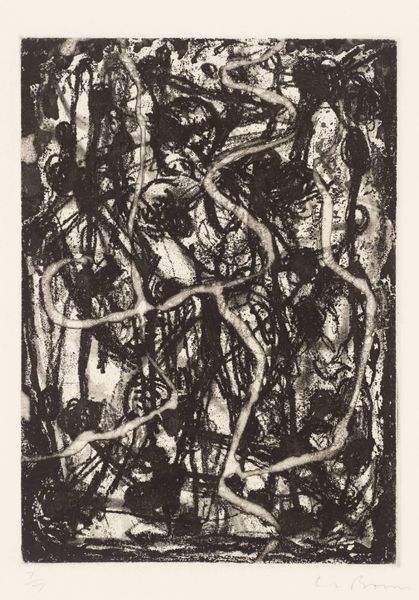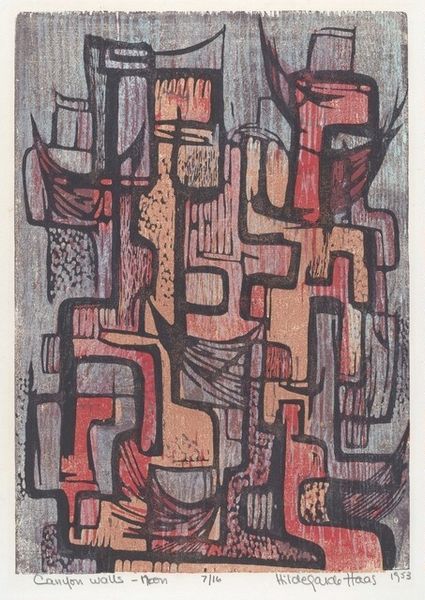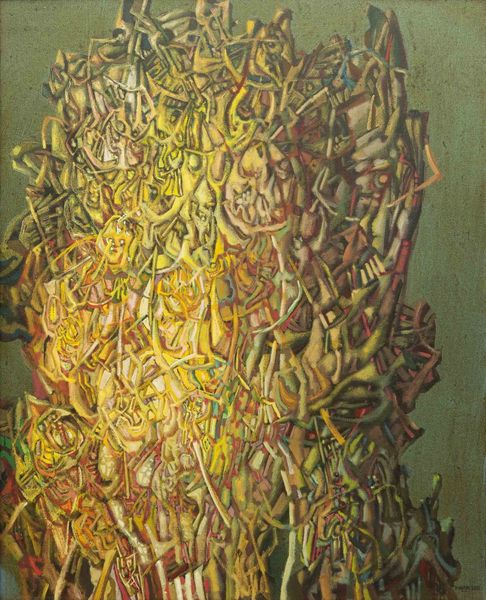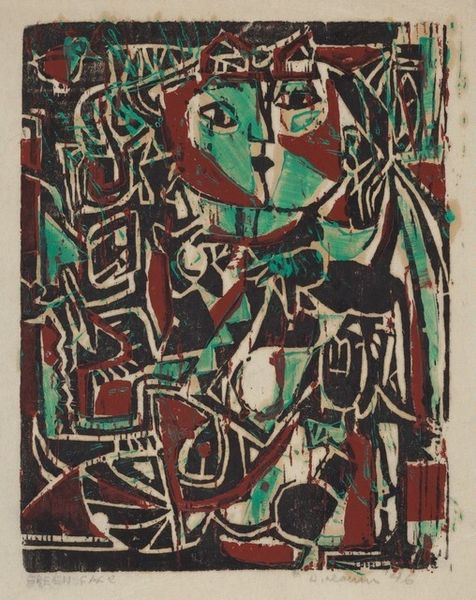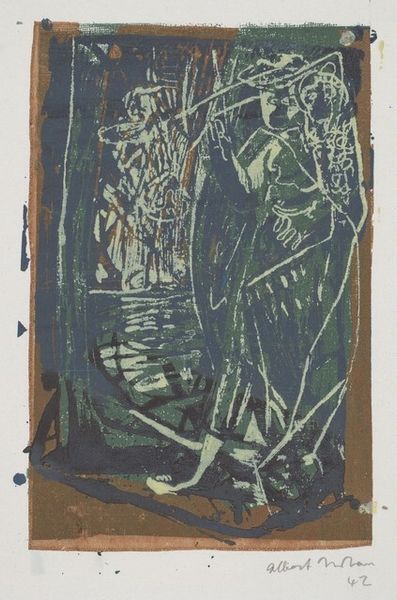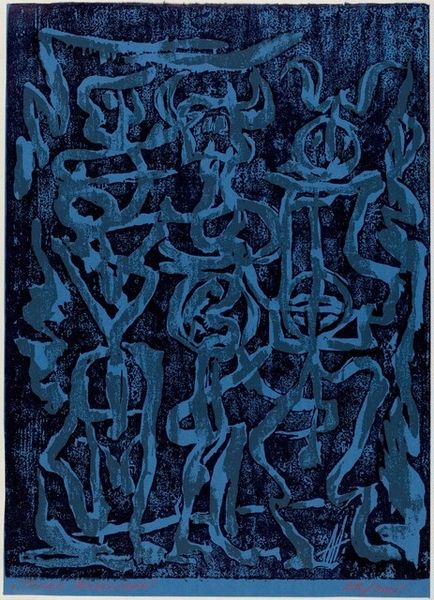
print, etching
# print
#
etching
#
figuration
#
abstraction
#
modernism
Copyright: National Gallery of Art: CC0 1.0
Curator: I find Frank Wright’s 1964 etching, "The Troubadours," quite compelling in its complex layering of form and meaning. Editor: It feels rather gloomy to me. Dark, muted tones, abstracted figures that are difficult to decipher…almost unsettling. Curator: Wright, emerging from a period deeply impacted by war and social upheaval, often grapples with themes of identity and social roles within his work. Here, the troubadours, figures historically associated with artistic expression and social commentary, appear fragmented, their forms almost dissolving into the background. Editor: Yes, but how was this effect achieved materially? The printmaking process – the etching itself – what can it tell us? There’s a noticeable roughness to the lines and textures. It doesn’t look pristine. Curator: That roughness, I believe, is deliberate. The textured surfaces and the seemingly incomplete lines emphasize a sense of instability. Think about the socio-political anxieties of the mid-20th century, the questioning of established norms. Editor: Interesting. For me, that texture also highlights the labor involved. Each etched line, each applied layer of ink. It brings a tactility and highlights the process of artistic production – of *making* meaning not just conveying it. You also see abstraction becoming quite popular at that time. Curator: Certainly. The abstraction plays a crucial role in destabilizing conventional representations. These aren't romanticized heroes, but rather figures struggling with their own representation. Editor: It makes me wonder about the choices inherent to printmaking itself. How its reproducibility impacts our understanding of the “original”. A comment on the value of art or even cultural worth during times of flux. Curator: Indeed. It invites us to reconsider the roles of both the artist and the art object in shaping cultural narratives, in reflecting and even influencing social change. Editor: Well, now I find its gloominess even more intriguing, understanding its historical roots in material processes. Thanks. Curator: It's been a pleasure shedding light on those intricacies and it will stay with me for the next little while.
Comments
No comments
Be the first to comment and join the conversation on the ultimate creative platform.
